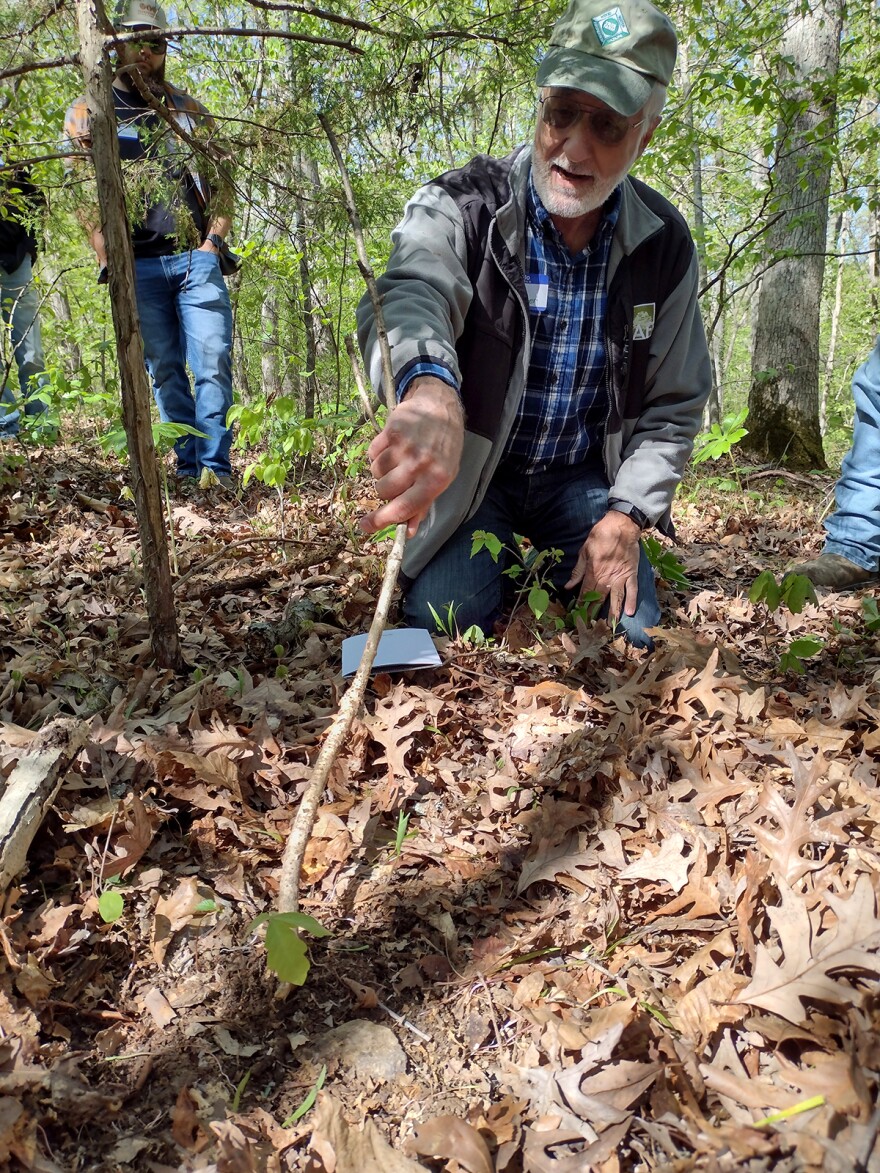Foresters across the country are asking private landowners for help saving white oak trees, and Missourians have eagerly answered the call.
More than 40 people recently signed up to help the University of Missouri Extension and the state Department of Conservation plant and raise white oak tree seedlings.
The project is a part of the White Oak Initiative, a more than 15 state effort that aims to make forests more suitable for the trees.
Brian Schweiss, a sustainable forestry specialist with MU Extension, said the white oak is a critical component of the forest ecosystem and supports wildlife. However, young trees are struggling.
“We have a lot of mature white oak, everybody loves our mature forests, and we have a lot of nice, big mature trees,” he said. “But, we don't have a lot of young trees that are coming up, replacing the mature trees that are harvested or died.”

The Department of Conservation and MU Extension are asking landowners to manage existing forests in ways that better support white oak trees. Also, through a program this January, they are offering training and free seedlings to those willing to reforest bare land.
“We're asking people to plant trees on idle acres that they may have,” Schweiss said.
Landowners are asked to consider establishing white oak seed orchards on their property with the goal of providing a steady supply of white oak acorns from the best quality trees.
“It's an opportunity to pick up some seed, make a little money and contribute to the forest resources of the state,” Schweiss said.
Schweiss said 83% of Missouri's forests are privately owned, making landowners’ support vital.
Participating landowners must attend three webinars before receiving 50 free white oak seedlings and commit to caring for the trees — including planting and weed control — for years.
“Ultimately, we hope landowners collect seed from the best trees to sell to the state nursery for future seedling production,” Schweiss said in an MU Extension news release. “While this may take 15-20 years, it is critical we think long-range to ensure quality oaks are available for planting.”
After putting out the call, the program filled up with more than 40 interested landowners. MU Extension is now compiling a waiting list for those interested in working with state conservationists to manage forests and support white oak development.
“It's just a great satisfaction to plant a tree,” Schweiss said. “Some people say, if you want to be happy for a year, plant a garden. If you want to be happy for life, plant trees.”
White Oak essential for Missouri wildlife and economy
Mike Fiaoni supervises the George O. White State Forest Nursery in Licking, Missouri. Originally managed by the U.S. Forest Service, the 100-acre nursery was founded to help landowners reforest highly erodible land in north Missouri and the Ozarks.
Fiaoni said the nursery, now managed by the state, is constantly evolving and grows 70 different tree species each year.
“We grow approximately 30,000 to 40,000 white oak seedlings here every year,” he said. “We plant approximately 6,500 pounds of white oak acorns every year to make that goal.”

As a result of changing weather patterns caused by climate change, white oak trees are struggling in Missouri. Fiaoni said periods of intense rain, followed by drought, put stress on white oak trees.
“They're kind of getting flooded in the spring, too much water, and then they go into a drought period for the summer, and then they may or may not get rain in the fall,” Fiaoni said.
Additionally, young white oaks can get crowded out by shade tolerant species like sugar maples. Foresters say active management is needed to ensure white oak seedlings have space to grow.
Schweiss said white oak is critical for both Missouri wildlife and the state forest products industry.
“Oaks are valuable for more than 100 different kinds of wildlife out there. Acorns are very high in nutrition for wildlife. They also serve as hosts for over 500 species of what we call Lepidoptera larva, which are moths and butterflies,” Schweiss said.
Schweiss said Missouri’s forest products industry contributes $10.3 billion to the state’s economy each year, due in part to the export of alcohol barrels.
“Missouri white oak is one of the top producers of staves,” Schweiss said. “You name the country, and if they make whiskey and wine, there's a good chance that they're getting Missouri forest products.”
Editor's Note: This story has been updated to correctly reflect the number of pounds of acorns the George O. White State Forest Nursery plants every year.



